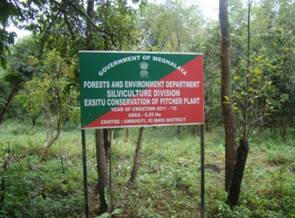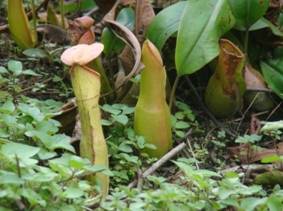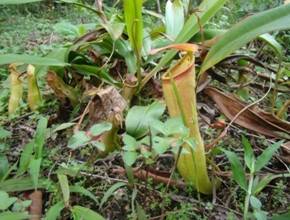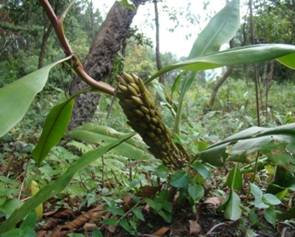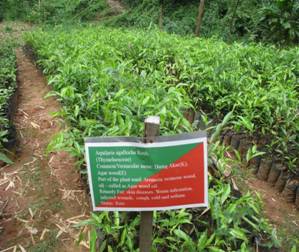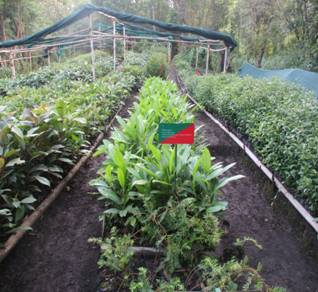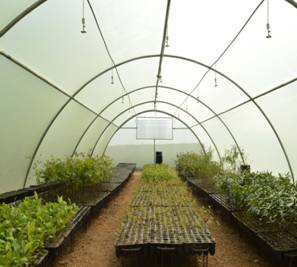- Skip to main content
- Screen Access Reader
- Text Size



- Contrast Options


- Character Spacing

Silviculture
Activities
- Creation of Seed Orchards and identification of Superior/Plus Tree species.
- Standardizing Nursery Practices and Propagation through tissue culture techniques of Rare, Endangered and Critically Endangered species and restock in the natural habitat.
- Protection and Conservation of Rare, Endangered & Endemic Plant Species through in- situ Conservation and protection from natural and biotic pressure.
- Protection and Conservation of Rare, Endangered & Endemic Plant Species and medicinal Plants through ex- situ conservation viz. Germplasm bank, creation and maintenance of herbal garden.
- Conservation & Developing protocols of important tree and Bamboo species of the State.
- Micropropagation and development of tissue culture protocols of Rare, Endangered & Endemic Plant Species including Orchids and Medicinal Plant, Nepenthes khasiana (Pitcher plant) and other plants.
Achievements
1. Standardizing nursery practices
The Division has standardized Nursery practices for Medicinal Plants viz.,
Taxus baccata
Acquilaria agallocha
Terminalia arjuna
Terminalia chebula
Terminalia ballerica
Rare and Endangered Species viz.,
Ilex khasiana
Podocarpus nerifolia
Commercially important species viz.,
Michelia champaca
Toona ciliata
Chukrassia tabularis
2. Activities of the Plant tissue culture laboratory
The Department has established sate of art Plant tissue culture laboratory at upper Shillong with following objectives:-
- Standardization of plant tissue culture protocol of rare and endangered plants, orchids, bamboo and medicinal plants of the region for large scale propagation.
- Conservation of rare and endangered plants, orchids, bamboo and medicinal plants of the region through plant tissue culture techniques.
- Imparting knowledge of plant tissue culture techniques through training, workshops, etc to students, farmers, Department officials, etc
Species for which tissue culture protocol have been standardized in the laboratory:-
- Rare, Endangered and Endemic plants (6 Nos): Nepenthes khasiana, Ilex Khasiana, Citrus indica, Nymphea tetragona, Gymnocladus assamicus, and Citrus grandis
- Orchids (19 Nos): Dendrobium nobile, Dendrobium chrysanthum, Vanda cerulea, Paphiopedilum insigne, Paphiopedilum villossum, Paphiopedilum hirsutissimum, Pleione praecox, Pleione maculata, Cymbidium cochleare,Cymbidium elegans,Cymbidium eburneum, Coelogyne corymbosa, Coelogyne fimbriata, cymbidium iridoides, Dendrobium falconeri, Dendrobium longicornu, Dendrobium ochraetum, Cymbidium mastersii and Dendrobium primulinum.
- Medicinal plants (9 Nos): Aegle marmelos, Acacia catechu, Aquilaria agallocha, Terminalia bellerica, Terminalia chebula, Tectona grandis, Gmelina arborea, Panax pseudoginseng and Taxus bacata.
Bamboo (4 Nos): Bambusa nana, Bambusa tulda, Dendrocalamus hamiltonii and Dendrocalamus strictus.
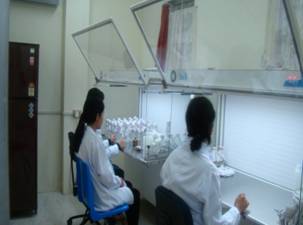 |
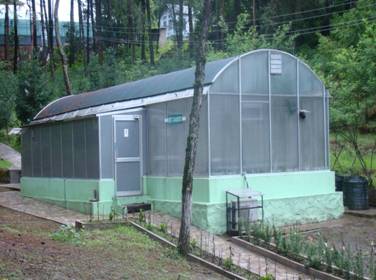 |
| Inoculation chamber | Mist chamber |
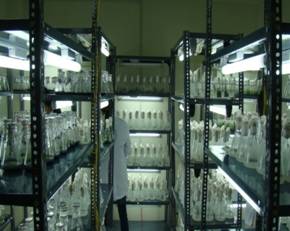 |
 |
Culture room |
|
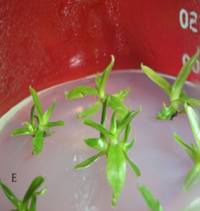 |
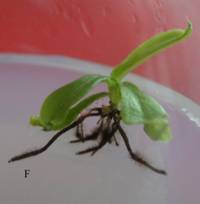 |
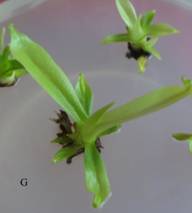 |
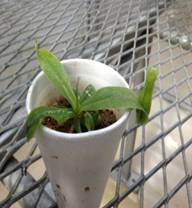 |
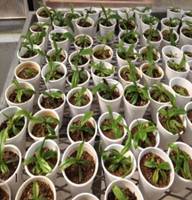 |
|
| In vitro propogation of Nepenthes khasiana (pitcher plant) | ||
Advantages of tissue culture grown seedlings
- High quality true to type seedlings
- Rapid large scale mass multiplication of novel plant material
- Round the year production of seedlings
- Production of disease free seedlings
- Easy transportation and less transportation cost
- Production of seedlings in case of plants which fails to produce seeds or long dormancy period or slow vegetative propagation
- Conservation of endangered and endemic plants which are very difficult to propagate through seeds due to incomplete development of embryo, long dormancy period or poor germination capacity
- Propagation of Orchids by using seeds through tissue culture is feasible which is otherwise very difficult
3. Protection of Area with Rare and Endangered Plant Species –
Is aimed at protection of rare and endangered plants of the State through creation of nurseries and plantations in order to ensure their protection and conservation ex-situ through artificial means.
The Scheme "conservation of rare and endangered plants" is being implemented by Silviculture Division and so far we have successfully raised and maintained 55 hectares plantation area of some rare and endangered plant species in different centres of the State. The prominent species planted are Taxus baccatta, Carpinus viminea, Podocarpus nerifolia, Rhododendron arboreum, Acquilaria agallocha.
4. Ex-situ & In-situ conservation of rare and endemic plants
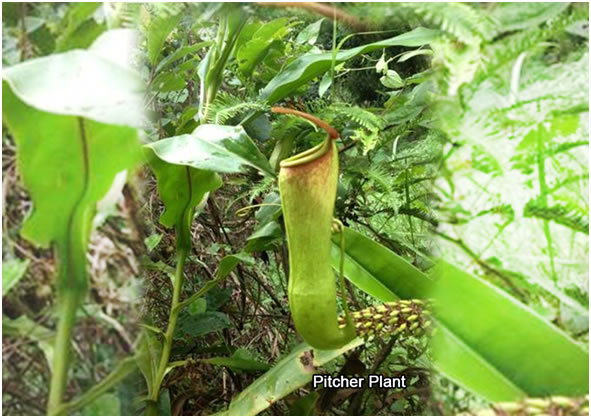
Pitcher Plant (Nepenthes Khasiana)- Insectivorous plant
The only pitcher plant found in India and is endemic to Meghalaya. It is a straggling scandent insectivorous shrub growing in the undisturbed sub tropical and tropical forests of the State at elevation ranging from 1000-1500 meters MSL.
Conservation Status
The pitcher plant is placed in the Critically Endangered IUCN Status category and is also in Appendix 1 of CITES. The Species also figures in schedule VI of the Wildlife Protection Act, 1972.
Medicinal uses:
the fluid in the unopened pitcher is used to treat eye, digestive and urinary ailments; for diabetes. The pitcher with its content is made into paste and applied on affected parts of leprosy patients.
Conservation measures.
Efforts have been made to conserve this plant through both in-situ and ex-situ conservation measures. Fire protection measures have been initiated in fire prone areas during dry months. A survey was carried out to map the natural habitat of pitcher plant in the state.
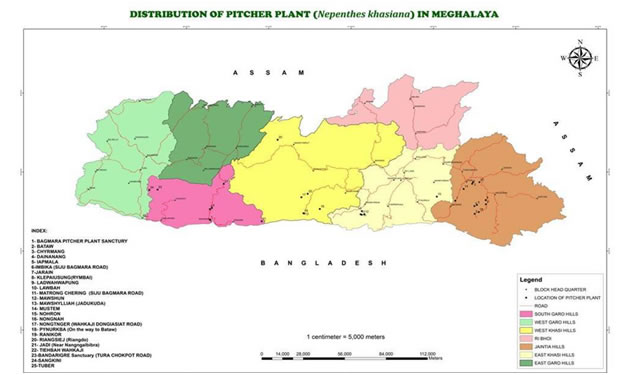
The Silviculture division has standardized tissue culture techniques for multiplication of pitcher plant. The tissue culture grown plants are being used to restock population of pitcher plant their natural habitat. Ex-situ conservation areas are established in Laitkynsew, Mawsmai and Umkhuti using tissue culture grown pitcher plants.
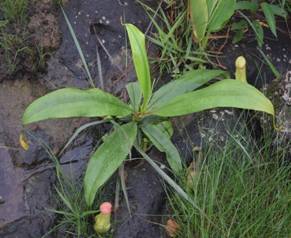 |
 |
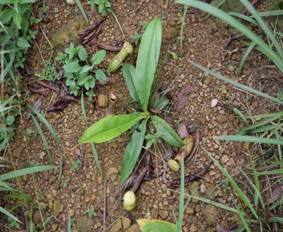 |
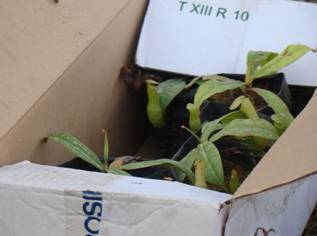 |
Planting of In-vitro seedlings Pitcher plants at Laitkynsew and Umkhuti (Ex-situ Conservation) |
|
|
|
|
|
| Ex situ conservation of Nepenthes khasiana, Umkhuti using invitro raised seedling | |
5. In-vitro Multiplication of Orchids - The State of Meghalaya is famous for its beautiful orchids. The climatic condition and topography of area is very suitable for the growth of different species of orchids of which about 300 species have been reported. However due to the disturbances caused by many adverse factors the number of orchids found in the natural habitat have been drastically reduced.
A research laboratory was set up at Shillong with the objectives of multiplying and propagating orchids by adopting tissue culture techniques. Even though the laboratory has minimum facilities and equipments, yet we have been able to successfully germinate seeds of some species of orchids and many of them have developed into seedlings and matured plants. Tissue culture protocol of 19 orchids species have been standardized in the laboratory.
List of orchids available at Conservation centre (total of 70 species)
| Sl. No | Species | Sl. No | Species |
|---|---|---|---|
| 1. | Agrostophyllum brevipes King & Pantl. | 36. | Eria paniculata Lindl. |
| 2. | Agrostophyllum planicaule Wall. ex.Lindl. | 37. | Eria stricta Lindl. |
| 3. | Anthogonium gracile Lindl. | 38. | Esmeralda clarkei Rchb.f |
| 4. | Arundina graminifolia D. Don | 39. | Flickingeria fugax Rchb.f |
| 5. | Bulbophyllum forrestii Seiderf. | 40. | Gastrochilus calceolaris Buch-Ham.ex Sm. |
| 6. | Bulbophyllum gymnopus Hook.f. | 41. | Goodyera procera Ker-gawl. |
| 7. | Bulbophyllum striatum Griff. | 42. | Liparis cordifolia Hook.f. |
| 8. | Bulbophyllum umbellatum Lindl. | 43. | Micropera obtusa Lindl. |
| 9. | Cephalantheropsis obcordata Lindl. | 44. | Micropera rostrata Roxb. |
| 10. | Coelogyne corymbosa Lindl. | 45. | Neogyna gardneriana Lindl. |
| 11. | Coelogyne flaccida Lindl. | 46. | Otochillus fuscus Lindl. |
| 12. | Coelogyne fuliginosa Lodd.ex Hook. | 47. | Oberonia pachyrachis Rchb.f. ex Hook.f. |
| 13. | Coelogyne ovalis Lindl. | 48. | Paphiopedillum hirsutissimum Lindl. ex Hook. f. |
| 14. | Coelogyne viscosa Rchb.f. | 49. | Paphiopedillum insigne Wall.ex Lindl. |
| 15. | Cymbidium aloifolium Lindl. | 50. | Paphiopedillum venustum Wall.ex Sims. |
| 16. | Cymbidium bicolor Lindl. | 51. | Papilionanthe vandarum Rchb.f |
| 17. | Cymbidium cochleare Lindl. | 52. | Phaius flavus Lindl. |
| 18. | Cymbidium eburneum Lindl. | 53. | Phalaenopsis taenialis Lindl. |
| 19. | Cymbidium elegans Lindl. | 54. | Pholidota articulate Lindl. |
| 20. | Cymbidium iridioides D.don. | 55. | Pleione humilis D.Don |
| 21. | Cymbidium lancifolium Hook.f. | 56. | Pleione maculata Lindl. |
| 22. | Dendrobium aduncum Wall. | 57. | Pleione praecox D. Don |
| 23. | Dendrobium chrysanthum Lindl. | 58. | Porpax gigantea Deori |
| 24. | Dendrobium crepidatum Lindl.paxton | 59. | Phaius tancarville L’ Her. |
| 25. | Dendrobium densiflorum Lindl. | 60. | Rhomba lanceolata Lindl. |
| 26. | Dendrobium devonianum Paxton | 61. | Rynthoshylis retusa Lindl. |
| 27. | Dendrobium heterocarpum Wall.ex. Lindl. | 62. | Schoenorchis gemmata Lindl. |
| 28. | Dendrobium jenkinsii Wall.ex.Lindl. | 63. | Smitinandia micrantha Lindl. |
| 29. | Dendrobium moschatum Buch-ham | 64. | Spathoglottis pubescens Lindl. |
| 30. | Dendrobium nobile Lindl. | 65. | Tainia minor Hook.f. |
| 31. | Dendrobium ruckeri Lindl. | 66. | Thunia alba Lindl. |
| 32. | Dendrobium ochreatum | 67. | Vanda alpina Lindl. |
| 33. | Eria bambusifolia Lindl. | 68. | Vanda coerulea Griff.ex Lindl. |
| 34. | Eria coronaria Lindl. | 69. | Vanda cristata Lindl. |
| 35. | Eria lasiopetala Willd. | 70. | Vanda undulata Lindl. |
6.Gene-Pool Conservation of Medicinal Plants - The importance of medicinal, aromatic and oil bearing plants as economic natural resources is well established and the State of Meghalaya is richly endowed with large varieties of these valuable plants on account of its wide range of climatic zones.
It is however unfortunate that the resource base of these medicinal plants is fast getting depleted due to random destruction of forests in private areas and there has never been any proper attempt by the users of these plants to cultivate them in a regular manner. As of now, the medicinal plans are being collected by the herbal plant practitioners from the forests in different parts of the State without replenishing them and it is felt that unless and until these plants are scientifically cultivated, many of them will disappear in no time.
"Conservation of medicinal plants" is being implemented by Silviculture Division and 96 nos of gene-pool conservation plots and 5 hectares plantation area have so far been successfully raised and are being maintained at different locations in East Khasi Hills, Ri Bhoi and East Garo Hills. The gene-pool plots are of 3 dimensions - 6m x 6m, 8m x 8m and 12m x 12m for herbaceous, shrub and tree species, respectively. The plants species collected in these plots are - Rhus semialata, Myrica nagi, Gaultheria fragrantissima, Rubus ellipticus, Panax ginseng, Potentilla fulgens, Mentha arvensis, Swertia chirata, Solanum nigrum, Acorus calamus, Abroma agusta, Azadirachta indica, Averrhoa carambola, Nepenthes Khasiana, Terminalia arjuna, Terminalia chebula, Terminalia ballerica, Rauwalfia serpentina, Asparagus racemosus, Acquilaria agallocha, Rhododendron arboreum and Taxus baccata.
7. Development of Bamboo - Meghalaya is well endowed with bamboo resources. According to literatures, 38 species of bamboo from 11 genera are found in Meghaaya (Biswas 1988). Different bamboo species naturally grow in almost every part of the State and due to prevailing varied physiographic and climatic condition there is diverse species distribution of bamboo in different part of the State.
- Establishment of Bambusetum - An area of 10 (ten) hectares each in Rongrengiri, East Garo Hills District and at Lumsohpetbneng in Ri Bhoi District is being taken up for setting up of bambusetum wherein about 20 to 25 species of bamboo, both indigenous and exotic are collected and conserved ex-situ.
Bamboo Planting Stock Production Centre - An area of 2 (two) hectares each in Rongrengiri, East Garo Hills District and at Lumsohpetbneng in Ri Bhoi District is also being taken up for setting up of bamboo nurseries to produce quality planting stock for future bamboo plantation programmes in private/ community wasteland through Social Forestry and for free distribution to the public.
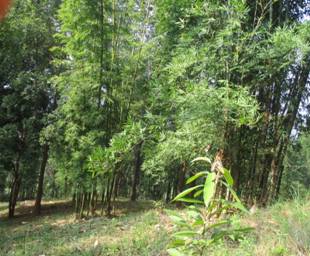 |
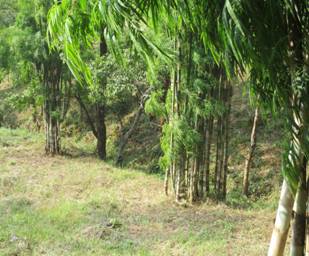 |
| Fig: Clumps of Bambusa vulgaris | Fig: Clumps of Bambusa polymorpha |
- Bamboo species maintained at Bambusetum:
- Bambusa bambos(Linn) 11) Bambusa balpakramii Naithani
- Dendrocalamus hamiltonii 12) Dendrocalamus hookeri
- Dendrocalamus strictus(Roxb) 13) Gigantochloa albociliata (Munro)
- Meloca;lamus maclellandi (Munro) 14) Melocanna baccifera(Roxb)
- Phyllostachys manni 15) Schizostachyum mannii
- Bambusa balcooa(Roxb)16) Bambusa cacharensis
- Bambusa jaintiana 17) Bambusa multiplex
- Bambusa polymorpha 18) Bambusa tulda(Roxb)
- Bambusa vulgaris 19) Bambusa vulgaris var.vittata
- Bambusa vulgaris forma waminii
8. Nursery
Silviculture Division created nurseries at Umsaw, Ri-Bhoi, Sangmein, Upper Shillong Umkhuti and Rongrengiri, East Garo HillsSome of the Plant species raised in the nursery are: Podpcarpus neriifolia, Ilex khasiana, Ilex excels, Ilex venulosa, Gymnocladus assamicus, Aquilaria agallocha Roxb, Mangolia lanuginose, Mangolia insignis, Mangolia caveana, Mangolia punduana, Taxus baccata, Taxus wallichina , Elaeocarpus prunifolius, Acer laevigatum Wall, Carpinus viminea Lindl, Terminalia bellirica, Terminalia chebula, Terminalia arjuna, Raulfia serpentine, Raulfia tetraphylla, Dillenia indica, Oroxylum indicum, Phyllanthus emblica, Carcinia padunculata, Carcinia kydia, Myrica spp.
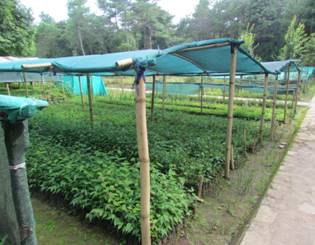 |
|
Nursery at Sangmein, Upper Shillong |
Nursery at Umsaw, Ri-Bhoi |
|
|
Nursery at Umkhuti Ri-Bhoi district |
Mist Chamber at Umkhuti Ri-Bhoi district |
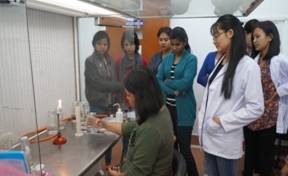 |
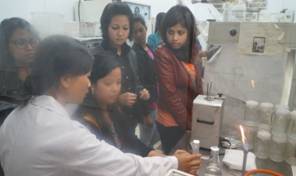 |
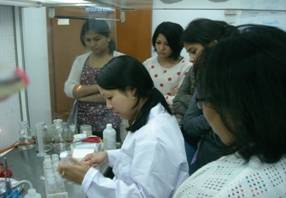 |
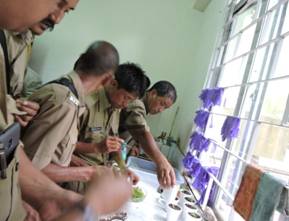 |
Hands on training at Tissue Culture lab for Research associates, Students and Frontline staff |
|
Training in advanced nursery practices
